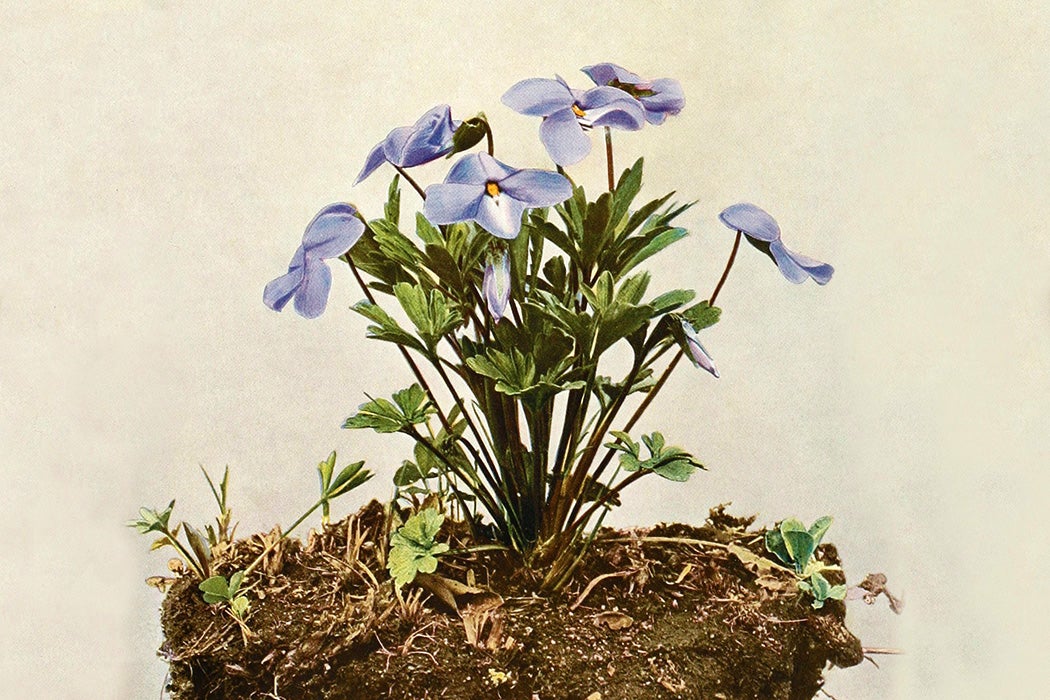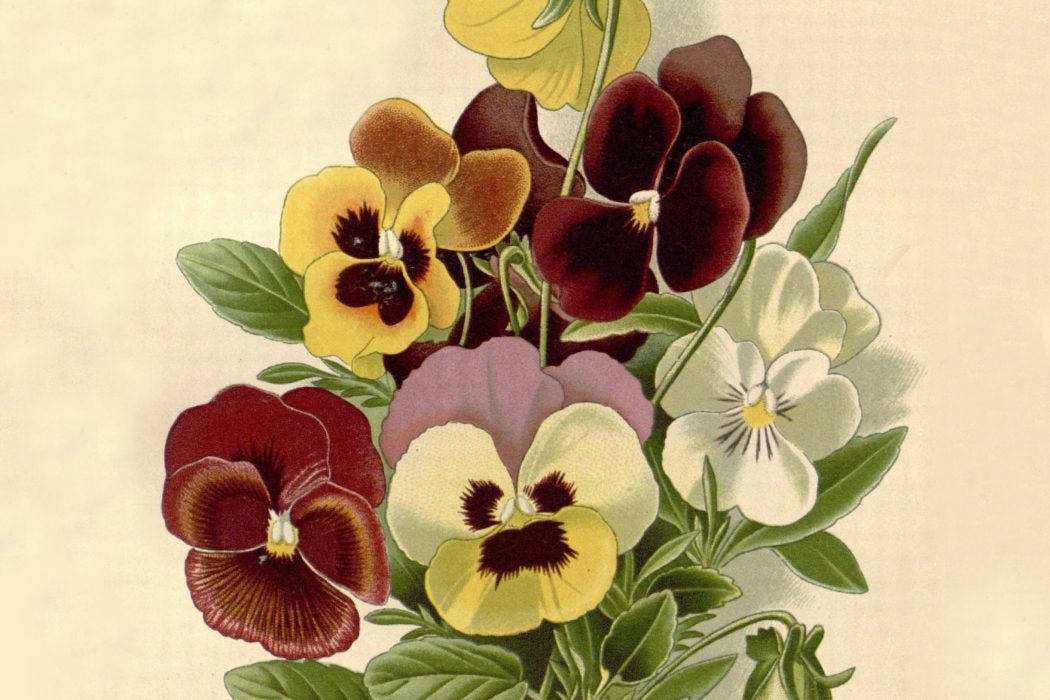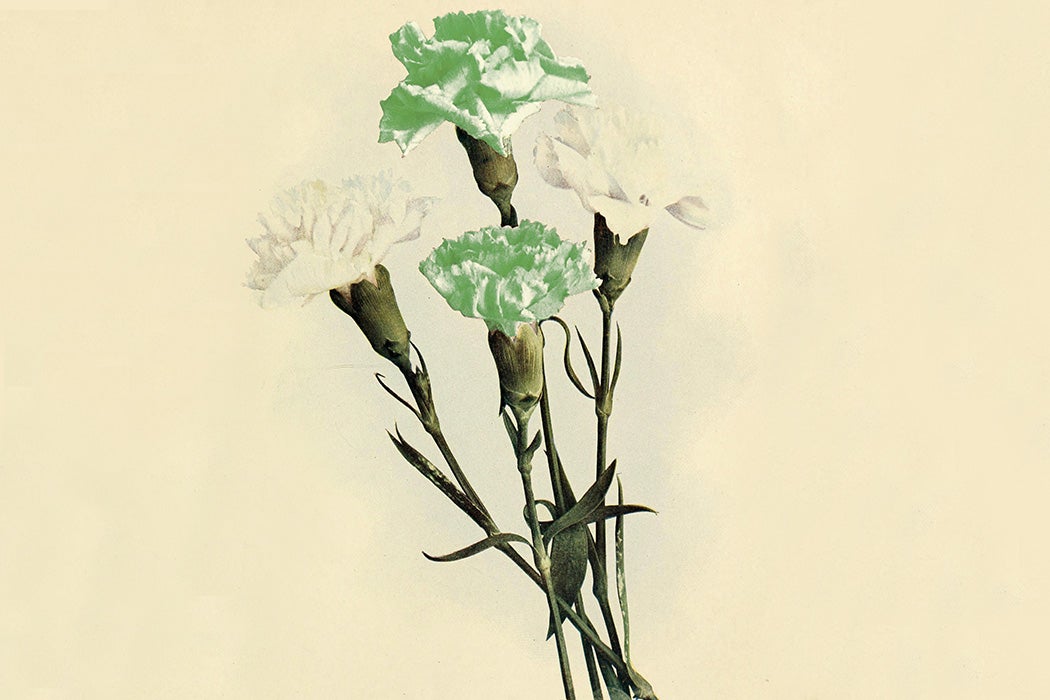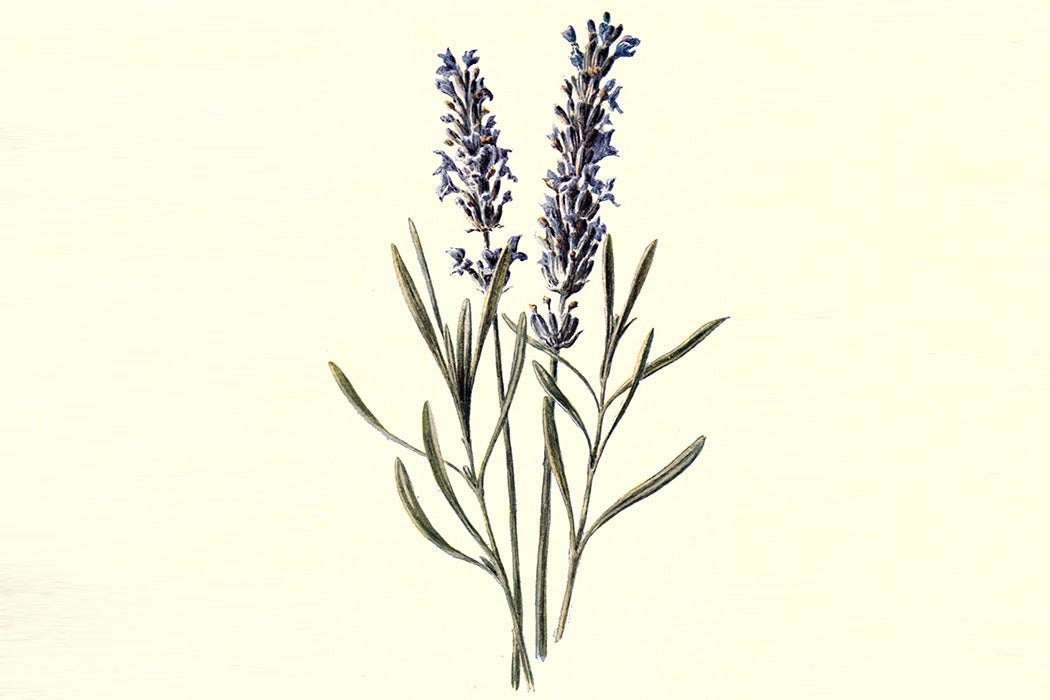The American “Pansy Craze” of almost 100 years ago cemented the use of that flower’s name as a slang term for queer men. Oscar Wilde earlier turned the green carnation into a symbol for them across the pond by wearing one on his lapel. Violets were associated with Sappho herself, and the calamus with Walt Whitman. A pre-Stonewall gay bar at the corner of Christopher Street and Gay Street was called The Flower Pot. And of course there’s Georgia O’Keeffe.
What’s the story behind all of this floral symbology? Are queer people perceived as delicate? Colorful? Beautiful? Frivolous? As the literary critic Christopher Looby notes in the journal Criticism, Marcel Proust’s 1921 Sodome et Gomorrhe speculated that male-male courting rituals were similar to the process of flower fertilization. Maybe all the buzzing about the north end of the Ramble in New York City’s Central Park is why that cruising ground was nicknamed the “Fruited Plain.” Or maybe it’s why “evening botanist” is one of the antiquated terms for queer men.
Here’s an exploration of the history of four particular flowering plants that have been decidedly queered.
Sapphic Violets

The floral fascination of queer people may date back to Sappho herself, fabled as the world’s first known woman-loving woman.
Sappho (c. 630 – c. 570) was a Greek poet who lived on the island of Lesbos, so close to Turkey’s border you can see it from the shore. Her presence there was so profound that the word “lesbian” originated with her. Any person from the island of Lesbos is a Lesbian, but Sappho’s heritage spawned the lowercase-L lesbian we know today. In 2008, Lesbian islanders sued for their right over the word and lost.
Weekly Newsletter
Her ancient poetry contains many references to flowers and nature, painting a picture of an idyllic pasture where girls and women frolicked adorned in garlands. Unfortunately, only fragments of her works remain:
5.
And you, Dika, put lovely garlands round your hair,
weaving together slips of anise with gentle hands:
since the blessed Graces look more to the flowerful,
but turn away from the ones without garlands.14.
Many crowns of violets,
roses and crocuses
…together you set before more
and many scented wreaths
made from blossoms
around your soft throat…
…with pure, sweet oil
…you anointed me,
and on a soft, gentle bed…
you quenched your desire…
…no holy site…
we left uncovered,
no grove…
In these and other fragments, she references roses, violets, crocuses, honey clover, a lotus, and hyacinth specifically. She also references “meadow blooms/spring flowers,” “golden flowers,” “garlands of blooming flowers,” and “purple blooms” generally. She mentions the color purple or violet multiple times, which is perhaps where this color first became associated with the queer community.
Violet (in addition to lavender) remains in the pantheon of queer symbols today. Think of Tennessee Williams’s Mrs. Violet Venable in Suddenly Last Summer or Violet in the lesbian cult classic movie Bound. And violet was one of the original 1978 rainbow flag’s colors.
Notably, a group of seven gay male writers who met up regularly in New York City in 1980 and 1981 named themselves “The Violet Quill.” Christopher Cox, Robert Ferro, Michael Grumley, Andrew Holleran, Felice Picano, Edmund White, and George Whitmore officially met up eight times over a one-year period, but unofficially before and after those meetings as well, to read and critique each other’s work. (The racial aspects of these men’s interactions and their writing are explored in “Race and the Violet Quill” by David Bergman.)
Interestingly, as the literary scholar Sherrie Inness observes in the National Women’s Studies Association Journal, in the 1926 play The Captive, one female character sends bunches of violets to another female character, perhaps referencing Sappho. The theme of lesbianism in this play led to an uproar and calls for a boycott and for censorship. The New York City district attorney’s office eventually gave in to these calls and shut down the production in 1927. The association of violets with lesbianism from this play led to plummeting violet sales at U.S. florists. However, at showings in Paris, some women wore the flower on their lapels as a show of support.
The Pansy Craze

As Looby notes in Flowers of Manhood, “daisy,” “buttercup,” and especially “pansy,” as well as the generalized “horticultural lad” were early twentieth century terms for “flamboyant gay men.”
“Pansies” were in their heyday in the 1920s and 1930s in New York and many other major cities around the U.S. This was known as the “pansy craze,” a term coined by the historian George Chauncey. Especially in New York City, drag balls starring “female impersonators” were extravagant and enormous. The police eventually shut them all down, including a 1939 one in Harlem that ended a 70-year annual tradition (for more, see Gaylaw: Challenging the Apartheid of the Closet by William N. Eskridge). Likewise, Hollywood’s “pansy craze” of queer representation in film was ultimately shut down by censors, but not before those movies helped to bring queerness to the national consciousness.

Image Caption: A drag ball in Webster Hall in Greenwich Village in the 1920’s. This image is in the public domain.
“Chauncey points out that while the pansy craze often drew on or reproduced the most demeaning stereotypes of male homosexuals, it did, at times, provide a space for some gay performers to speak about, to resist, and even to counter heterosexist presumptions about fairies and other queers,” the film scholar Mark Lynn Anderson writes in his 2011 book Twilight of the Idols: Hollywood and the Human Sciences in 1920s America.
The Green Carnation

The green carnation became a queer symbol in 1892 when Oscar Wilde instructed a handful of his friends to wear them on their lapels to the opening night of his comedy Lady Windermere’s Fan. From then on, wearing a green carnation on your lapel was a secret, subtle hint that you were a man who loved other men.
In 1892, Wilde’s lover Lord Alfred Douglas wrote a poem called “Two Loves.” It is reminiscent of Sappho’s poetry, painting an image of a flower-filled utopia (emphasis on flowers added):
I dreamed I stood upon a little hill,
And at my feet there lay a ground, that seemed
Like a waste garden, flowering at its will
With buds and blossoms. There were pools that dreamed
Black and unruffled; there were white lilies
A few, and crocuses, and violets
Purple or pale, snake-like fritillaries
Scarce seen for the rank grass, and through green nets
Blue eyes of shy pervenche winked in the sun.
And there were curious flowers, before unknown,
Flowers that were stained with moonlight, or with shades
Of Nature’s wilful moods; and here a one
That had drunk in the transitory tone
Of one brief moment in a sunset; blades
Of grass that in an hundred springs had been
Slowly but exquisitely nurtured by the stars,
And watered with the scented dew long cupped
In lilies, that for rays of sun had seen
Only God’s glory, for never a sunrise mars
The luminous air of Heaven.
The poem continues on, describing a young man, whose “wind-tossed hair was twined with flowers” and who was wearing “three chains of roses” around his neck. He comes toward the poet and kisses him. “His cheeks were wan and white / Like pallid lilies, and his lips were red / Like poppies,” Douglas continues. The boy reveals that his name is “Love” and ends with saying, “I am the love that dare not speak its name.” This phrase, “the love that dare not speak its name,” was later brought to prominence as reference to homosexuality in Wilde’s gross indecency trial in 1895.
A Streak of Lavender

This flowering plant in the mint family is inseparable from queerness. While we don’t know whether “lavender” refers to the color or the herb now in a queer context, but either way the word seems to have been used in this context since the 1920s. It’s now used interchangeably with “rainbow” to mean “LGBTQ+” at events like Lavender Graduations and the annual Lavender Law Conference of the LGBT Bar Association.
One of the most notable uses of “lavender” comes from the historian Carl Sandburg, who wrote in 1926 of Abraham Lincoln: “A streak of lavender ran through him; he had spots soft as May violets.” Many have interpreted this to mean that Lincoln had a queer side, a claim I explore in my book, Queer, There, and Everywhere: 23 People Who Changed the World, which features Lincoln’s intimate relationship with Joshua Fry Speed. Historians disagree, but it’s reasonable to interpret “lavender” as meaning male-male love here, since there are other examples from the 1920s of “lavender” as a slang term to mean this. The true debate lies in how wide this “streak” was.
There are two main movements associated with lavender in the queer world: The Lavender Scare and the Lavender Menace. The Lavender Scare was a 1950s witch hunt for homosexual federal employees, much like the Red Scare was one for communists, as detailed in “The Lavender Scare and Empire: Rethinking Cold War Antigay Politics” by the historian Naoko Shibusawa.
Betty Friedan called any potential association of the National Organization for Women with lesbians “the lavender menace” in 1969. Not wanting to tarnish her organization’s reputation, Friedan led NOW to distance itself from lesbians. Rita Mae Brown and other lesbian feminist activists planned an action on May 1, 1970 where they disrupted a prominent women’s event by revealing T-shirts that bore “Lavender Menace” on them, encouraging others to join them. They earned the crowd’s support, and the moment is remembered as a turning point in the movement. At NOW’s next national conference in 1971, the organization reversed its direction and adopted a resolution that lesbian rights were a “legitimate concern of feminism.”
No matter what floral names we may be called, queer people are resilient. Like the women of the Lavender Menace, we will reclaim them all and declare ourselves pansies proudly. While all of this horticultural symbolism may have started with comparing effeminate men to frilly flowers, it’s become more than that. We bloom every year in a brilliant rainbow of colors around the world, always returning, no matter how bitter the winter.
Support JSTOR Daily! Join our new membership program on Patreon today.







